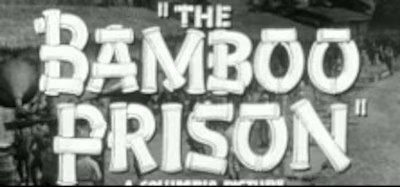Burnett Guffey
About
Biography
Filmography
Biography
The genius of this celebrated American director of photography was in his use of lighting which served him well through dozens of dark crime flicks, yet he was also able to demonstrate a great sensitivity and external representation of internal human emotions. Adept at both black-and-white and color photography, Burnett Guffey is particularly remembered for his two Academy Award winning efforts: "From Here to Eternity" (1953), in which the desires of the characters oozed from their lighted pores; and "Bonnie & Clyde" (1967), in which the lighting offered not just a sense of the period, but a subtle irony as well.
Guffey, who lived past the studio system to shoot such froth as "Gidget" (1959), was a favored cinematographer of such directors as Will Jason, Joseph H. Lewis, Henry Levin, Phil Karlson, David Swift, and Don Siegel. Additionally, he worked with Fritz Lang ("Human Desire" 1954), Fred Zinnemann ("From Here to Eternity"), Robert Rossen ("All the King's Men" 1950), Arthur Penn ("Bonnie & Clyde"), Gordon Parks ("The Learning Tree" 1969), and Martin Ritt ("The Great White Hope" 1970).
Raised in Etowah, Tennessee, Guffey was already in California at age 18 when he found a job at Fox working as an assistant cameraman, and his resume in that capacity includes such silent films as "The Courtship of Miles Standish" (1923), and "The Iron Horse" (1924), for which he also did second unit photography and which brought him into contact with John Ford for the first time. By 1928, Guffey was a camera operator for Paramount and seven years later worked under Joseph H. August, on the John Ford-directed "The Informer." As such, Guffey learned the Hollywood and American adaptation of expressionistic lighting methods which had been prevalent through the gangster cycle at Warner Bros. in the early 1930s, and which reached greater heights during the film noir period of the 40s. (Among his other notable credits as camera operator is Alfred Hitchcock's 1940 drama "Foreign Correspondent.")
Guffey was finally elevated to director of photography in 1944 with "The Soul of a Monster" at Columbia, where he spend the bulk of his career. "Soul," like many of Columbia's films at the time, was a low-budget programmer, but it allowed the cinematographer the opportunity to develop his style through which the visual elements of the films could speak the event of the scene perhaps better than the dialogue. Guffey was frequently assigned to films of Will Jason, Henry Levin and Joseph H. Lewis, handling all genres, including adventure yarns and musicals, with aplomb. As seen in the film collaboration with Levin in particular, the DP had an intuitive sense for lighting that revealed the psychological levels of the characters -- a key goal of expressionism. This was particularly true with "All the King's Men" (1950) for director Robert Rossen, where the lighting reflects the darkening of the Willie Stark (Broderick Crawford) character as he is corrupted. Stark is first seen in dusty, almost pastoral light at his farm, but by film's end, the darkness is almost cloying.
As the studio system crumbled in the 50s, directors of photography scrambled to become freelancers, and genre-typing almost disappeared. Because of his flexibility, Guffey was well-suited to handle such efforts as the sweet, light comedy Danny Kaye vehicle "Me and the Colonel," the playful "Gidget" (1959), and a return to the camera-as-analyst with "The Birdman of Alcatraz" (1962). Guffey worked with first-time feature director Gordon Parks in 1969 on "The Learning Tree," blending the stunning framing for which the director had been celebrated as Life magazine photographer with the enveloping, telling lighting for which the DP was heralded. Guffey's last working years were full of triumphs such as "The Great White Hope" (1970), and transcended even in the silliest of vehicles such as "Suppose They Gave a War and Nobody Came" (1969) and "The Steagle" (1971).
Filmography
Cinematography (Feature Film)
Life Events
1923
First film as assistant camera, "The Courtship of Miles Standish"
1923
Took break from entertainment industry working as a messenger in a bank.
1924
First film as 2nd unit cinematographer "The Iron Horse"
1928
First film as camera operator
1935
Was camera operator on "The Informer"
1944
Began working as a cinematographer with "The Soul of a Monster"
1953
Won Academy Award for "From Here to Eternity"
1959
Demonstrated versatility as DP of "Gidget"
1967
Won Academy Award for "Bonnie & Clyde"
1971
Release of final film, "The Steagle"
Videos
Movie Clip












Trailer
























